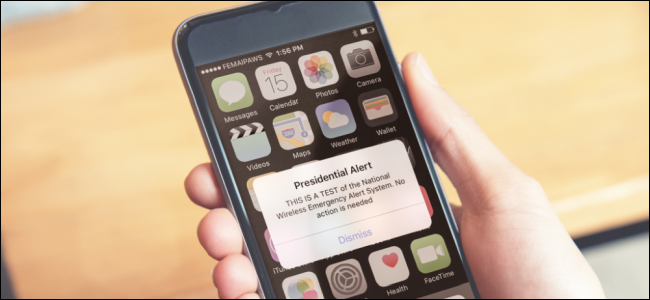本文主要是介绍今天您手机上的“总统警报”弹出窗口是什么?,希望对大家解决编程问题提供一定的参考价值,需要的开发者们随着小编来一起学习吧!

Your cell phone will receive a national alert today, October 3, at around 2:18 pm ET. It’s only a test, so there’s nothing to worry about. Here’s what you need to know about these “presidential” alerts.
您的手机将在美国东部时间10月3日下午2:18左右收到国家警报。 这只是一个测试,因此无需担心。 您需要了解这些“总统”警报。
什么是无线紧急警报? (What are Wireless Emergency Alerts?)
This is the US government we’re talking about here, so get ready for some acronyms. We’ll try to keep them to a minimum, though.
这是我们在这里谈论的美国政府,因此请准备一些首字母缩写词。 但是,我们将尽量减少它们。
The Wireless Emergency Alerts (WEA) system proper was created in 2012, but it’s actually been around longer than that. The FCC proposed and created the alert network in 2007 in response to an act passed by Congress in 2006—the Warning, Alert, and Response Network (WARN) Act. It was originally named the Personal Localized Alerting Network (PLAN), was later renamed the Commercial Mobile Alert System (CMAS), and is now finally the WEA.
适当的无线紧急警报(WEA)系统创建于2012年,但实际上比这更长。 FCC在2007年根据国会在2006年通过的一项法案(《警告,警报和响应网络(WARN)法案》)提出并创建了警报网络。 它最初被称为个人本地警报网络(PLAN),后来被更名为商业移动警报系统(CMAS),现在终于成为WEA。
The idea behind the WEA is to be able to deliver alerts of different kinds to people all over the US but to also be able to target them to specific geographic regions when necessary. Right now, in cooperation with major wireless carriers, FEMA can deliver alerts nationally or to an area as small as a single county. They do this using a system known as t
这篇关于今天您手机上的“总统警报”弹出窗口是什么?的文章就介绍到这儿,希望我们推荐的文章对编程师们有所帮助!






